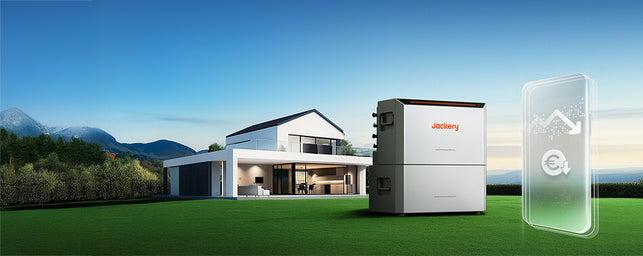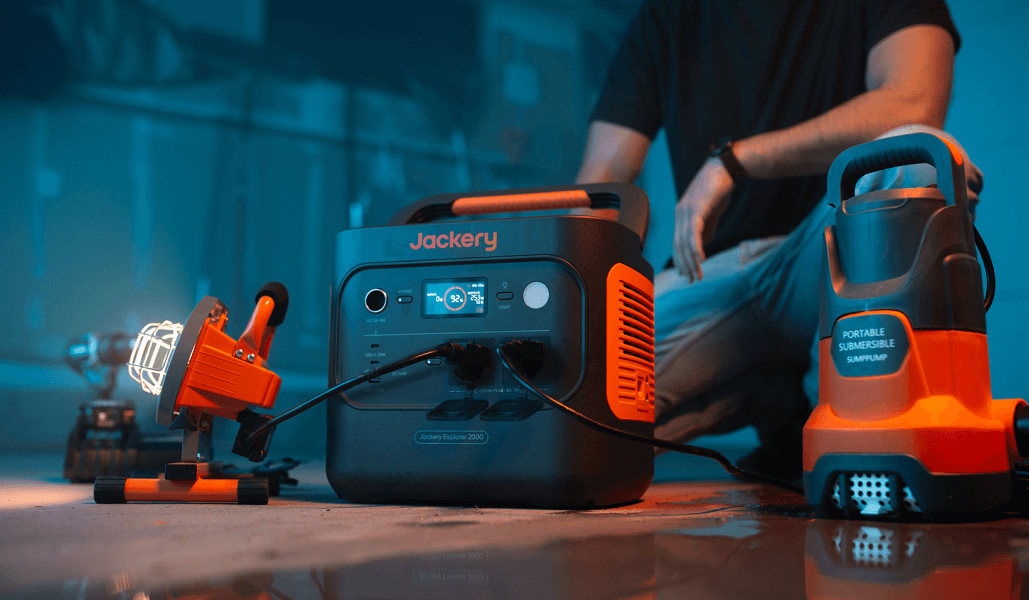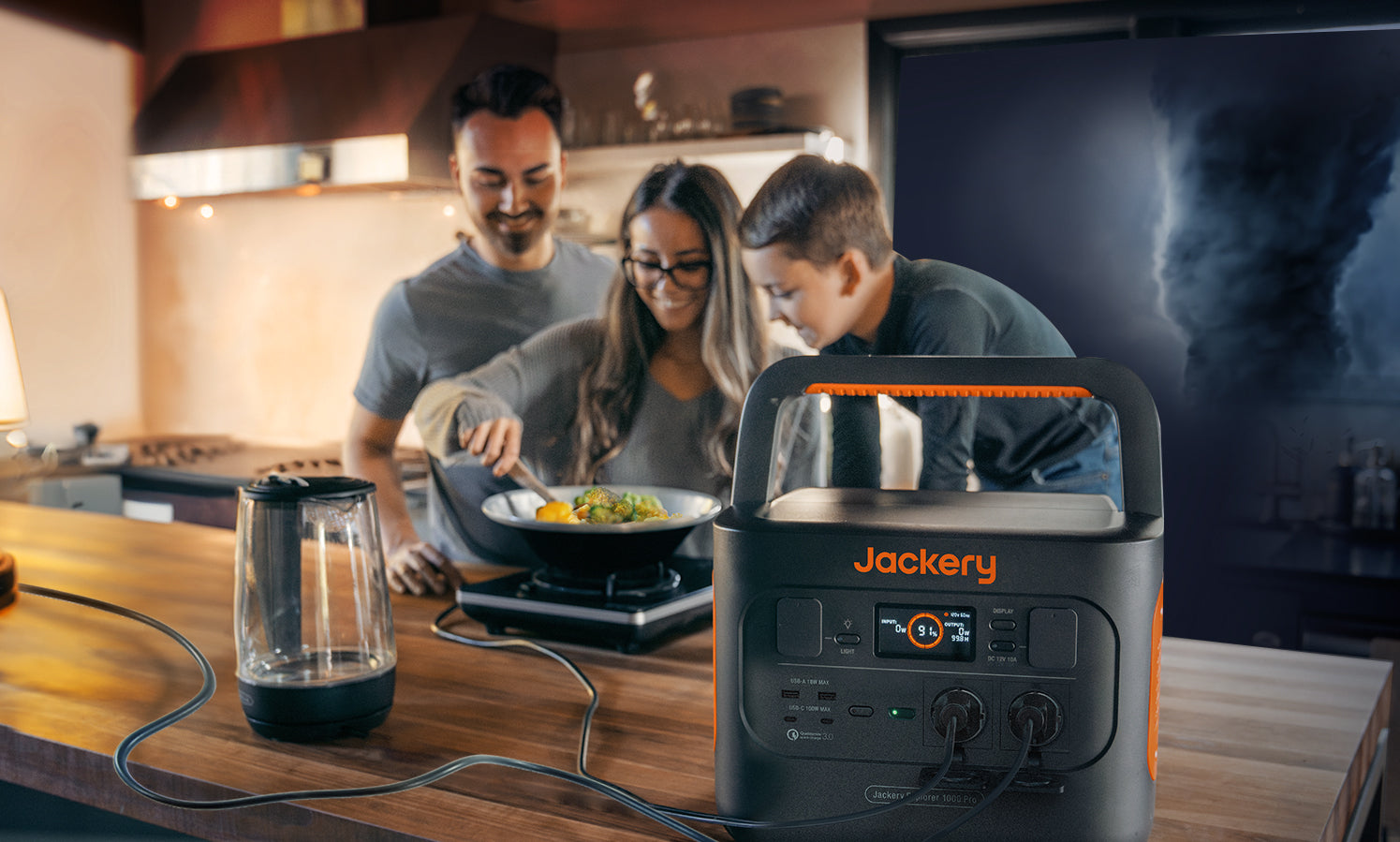Why Disaster Preparedness Needs Solar Power
Vulnerabilities of Traditional Energy Sources
Traditional energy infrastructures, depending on centralized power grids, are vulnerable during disasters. Most European grids use interconnected transmission lines, substations, and fossil fuel plants. When floods, wildfires, or earthquakes strike, the physical components are the first to fail. For instance, during Germany's 2021 flooding in the Ahr Valley, key substations were inundated, leaving many without electricity for weeks.[1] Moreover, fossil fuels introduce an additional bottleneck. Damaged transportation networks disrupt fuel supply chains. It could be seen during snowstorms in southern Europe because road blockages delayed fuel deliveries.
Even nuclear plants are touted for their resilience, but they still need continuous cooling and fail-safe mechanisms that are power-dependent themselves. If auxiliary systems go offline, as was narrowly avoided during France's 2003 heatwave, failures could occur.[2] Traditional systems also fail with overloading when demand spikes during cold or heat for grid instability. Counting on centralized grids and supply chains points to diversifying energy strategies in disaster scenarios.
Advantages of Renewable Energy in Emergencies
Solar power installations are decentralized and self-sustaining, thus rendering them disaster-resistant. Solar systems function independently of vulnerable grids, unlike traditional energy sources, for uninterrupted electricity. For instance, during the 2022 heatwave in Spain, localized solar installations kept cooling systems in remote hospitals when grid power faltered. Additionally, solar systems need negligible operational dependencies. Photovoltaic panels convert sunlight into electricity without refuelling or external inputs. Solar setups can store energy with battery storage for a dependable power supply during lengthy outages.
Solar's modularity augments its utility. Small-scale installations can be deployed rapidly in affected areas. For example, portable solar units in Turkey provided power to communication systems after the 2023 earthquake. Beyond functionality, solar is sustainable. It generates power without emissions or hazardous waste, unlike diesel generators that might contaminate disaster sites. Consequently, solar power installations in Europe's disaster preparedness plans are practical and a safeguard against recurrent and catastrophic disruptions.
Key Components of a Solar Power Installation for Emergencies
Core Components of a Solar Power Installation
Emergency solar power installation needs solar panels, inverters, batteries, and solar generators. First of all, solar panels’ most visible component is silicon or other semiconductor PV cells. Panels differ in efficiency. For instance, monocrystalline panels offer better performance under low light in Northern Europe. Similarly, inverters convert the DC from the panels into AC, which most appliances use. High-quality inverters (hybrid models) can manage power flow dynamically between solar panels, batteries, and the grid for operation.
Batteries (lithium-ion phosphate) store superfluous energy for later use. They are chosen over lead-acid alternatives in emergency setups for their better energy density, life, and charge/discharge cycles. Backup generators are not strictly part of every solar power installation, but they are fail-safe options. Diesel or natural gas generators are standard. Nonetheless, integrating them needs a synchronization mechanism so they kick in without disrupting the system's voltage stability. Choosing components with strong warranties and compatibility certifications guarantees that the system operates cohesively under emergency stress.
System Integration for Reliable Emergency Power
Collectively, the components of a solar power installation must provide continual power, which demands careful system integration. Solar panels generate DC electricity during daylight, but they cannot be stored or distributed without batteries or grid interaction. Inverters confirm that energy is converted. Some of the latest models can concurrently manage energy inputs from the grid, solar panels, and batteries. During an emergency, if grid power fails, an automatic transfer switch certifies a shift to off-grid operation while drawing power from batteries.
For voltage and frequency fluctuations, inverters with maximum power point tracking algorithms stabilize energy flow. Batteries are the backup to discharge power during peak or nighttime demand. Nevertheless, if long outages deplete battery reserves, a well-calibrated generator assures continuity. Systems include energy management software that prioritizes medical devices or communication systems during an outage. For instance, the ecosystem may combine modular MPPT controllers with communication protocols for real-time system optimization.
Importance of High-Quality Equipment for Emergency Readiness
High-quality components in a solar power installation are key to emergency preparedness. Low-cost panels may degrade faster due to temperature coefficient issues in Southern Europe. Panels with high-temperature tolerance ratings and low degradation rates (Tier-1 monocrystalline modules) are more dependable. Inverters with IP65 or higher ratings can bear punitive environmental conditions to cut failure risks during emergencies. Battery quality impacts system performance. For example, lithium-ion phosphate batteries offer over 4,000 cycles at 80% depth of discharge. It tops lead-acid batteries, which might fail after 1,000 cycles.
When selecting a backup generator, fuel efficiency and noise levels are critical in urban European settings with noise regulations. Warranties and support infrastructure matter, too. E.g., inverters and batteries might be backed by European service networks, so replacements or repairs are swift. Skimping on quality may cause failures during emergencies. Weak components introduce inefficiencies and risks throughout the system. Investing in a top-notch solar power installation safeguards against long outages and gives energy freedom when it matters most.

Benefits of Solar Power Installation in Disaster Situations
Independence from the Electrical Grid
In disaster scenarios, the electrical grid can be insufficient in Europe. Ageing grid infrastructure in certain regions compounds the challenge of rapid recovery. Solar power installation offers a decentralized energy solution for energy independence when centralized grids collapse. For example, during the European floods in 2021, areas with solar systems in rural Germany upheld communication towers and medical facilities. Grid-dependent regions faced blackouts.
Solar installations with battery storage give round-the-clock availability. They provide autonomy to sustain refrigeration for vaccines or power for mobile emergency units without external fuel sources. Bifacial solar panels capture sunlight from both sides and can increase energy generation efficiency in snowy post-disaster conditions where albedo effects boost reflectivity. It empowers communities to prioritize disaster recovery without grid restoration timelines.
Low Maintenance and Long-Term Cost Savings
Solar power installations utilizing monocrystalline panels offer a low-maintenance design. It is an advantage in disaster-stricken areas since manpower and resources are constrained. The absence of moving parts in solar panels lowers wear-and-tear issues in mechanical systems for high active reliability in unforgiving post-disaster environments. Further, self-cleaning coatings on solar modules decrease the accumulation of dust or debris to cut down manual upkeep needs.
Over time, the initial solar panel installation costs are counterbalanced by lower working expenses. Solar installations may function for 25-30 years with negligible degradation.[3] Annual efficiency loss might be around 0.5%. For disaster scenarios, it implies sustained cost-effectiveness with net metering policies in Europe, which allow surplus energy storage during non-crisis periods. Plus, low upkeep needs guarantee incessant functionality when maintenance personnel are unavailable, including during punishing weather or protracted road closures.
Silent Operation Compared to Gas Generators
While operative in emergencies, gas generators produce noise pollution. It can exacerbate stress and decrease communication efficiency in disaster recovery zones. On the other hand, solar power installations operate silently. It benefits densely populated European cities during crises. The quiet operation gives a calmer environment for displaced individuals. It supports undisturbed coordination in emergency medical shelters. Likewise, solar power disregards carbon monoxide poisoning. No doubt, it is a hazard with poorly ventilated gas generator setups.
Solar installations with integrated inverters provide silent conversion of DC to AC power. It delivers a stable energy supply to ventilators or satellite communication systems. Interestingly, with acoustic absorption materials in urban setups, such systems can boost the quality of life for affected populations with lower ambient noise levels. Hence, silent solar power operation warrants a safer, more harmonious environment, amplifying its value during disaster scenarios.
Jackery Solar Generator 2000 Plus: A Reliable Backup Solution
The Jackery Solar Generator 2000 Plus should be considered as a backup power solution for European disaster preparedness for portability, ease of use, and energy storage capabilities. With a base capacity of 2 kWh (up to 12 kWh using up to five add-on battery packs and even further to a staggering 24 kWh when two units are connected in parallel), it provides flexibility for stretched blackouts or off-grid operations. It powers heavy-duty devices up to 3000W, supporting welding machines (5800W for 0.6 hours), portable air conditioners (1150W for 1.9 hours), and pressure cookers (1080W for 1.7 hours). With six Jackery SolarSaga 200W Solar Panels, it guarantees a solar charge in 2 hours. It utilizes IBC solar panel technology with a 25% efficiency rate, which generates 50% more power in low light than conventional solar panels.
With a durable LiFePO4 battery, the system keeps a 70% charge capacity even after 4,000 cycles, ensuring reliability for over a decade of daily use. Our ChargeShield technology increases battery life by 50% with its stepped variable-speed charging algorithm and 62 protective mechanisms for emergencies. Operating within 0°C to 45°C, the system supports disaster scenarios across climates. All this is housed in a portable design that is manageable and compatible with intelligent app control. It lets users monitor and adjust the system remotely. As a TÜV-certified carbon-neutral product, it typifies sustainable solar power installation for emergency preparedness. Meanwhile, it ensures reliable energy without the grid.

Tips for Setting up Your Solar Power Installation for Emergencies
Assess Energy Needs for Critical Devices
Quantify the wattage needs of refrigerators, medical equipment, communication tools, and lighting. Create an energy profile, noting each device's power (watts) and daily usage hours. E.g., a standard 120W refrigerator running 10 hours daily consumes 1.2 kWh daily. Next, account for surge power. A refrigerator's compressor may momentarily demand up to 600W. Factor in conversion losses from the inverter. A 90% efficient inverter increases the power demand by 10% and is designed for realistic loads. Finally, consider variations in sunlight. In Europe, winter sunlight hours can drop, and higher panels and storage capacity are needed for reliability. Use a load calculator or modelling software for precision in sizing your solar power installation.
Choose Durable and Efficient Solar Panels
Select monocrystalline panels for their higher efficiency and performance under low-light conditions in Europe's northern regions. Look for panels with a low-temperature coefficient, such as -0.25%/°C, to cut efficiency loss during heatwaves. Compare the degradation rates. Top-tier panels degrade at 0.5–3% annually. Check for certifications like IEC 61215 for durability under stress. Additionally, consider bifacial panels for higher output if space allows. Pair panels with MPPT charge controllers to heighten energy harvest during cloudy days. When mounting, prioritize adjustable tilt systems. In Europe, a tilt angle of 30°-40° may exploit solar exposure, but it should be adjusted seasonally for gains. Ground your system to avoid lightning damage.
Ensure Proper Battery Capacity and Backup Options
LiFePO4 batteries suit emergency setups due to their long cycle life and thermal stability. Size your storage while calculating the energy autonomy. For instance, covering three days of cloudy weather at 3 kWh daily demands a minimum of 9 kWh battery. Incorporate DoD limits. LiFePO4 batteries support 80-90% DoD for lower required capacity than lead-acid alternatives. Include an inverter charger with dual AC and DC inputs for grid or generator recharging. For redundancy, add a secondary, small, portable generator. Use hybrid inverters with intelligent load prioritization to switch between solar, battery, and grid sources. Finally, invest in a BMS to thwart overcharging or overheating for better reliability in your solar power installation.
Conclusion
For European disasters, build a DIY solar system with monocrystalline panels, MPPT controllers, and LiFePO4 batteries for durability. Add a scalable solar power station for off-grid capacity during long outages. For grid instability and variable demand, emphasize systems with automatic transfer switches and modular backups. Assess your key energy demands and optimize storage for three days of autonomy to continue important operations during emergencies. If you are having difficulty choosing individually, we at Jackery provide bundles with power stations and solar panels. Welcome to visit our website to explore our range of solar generators!









